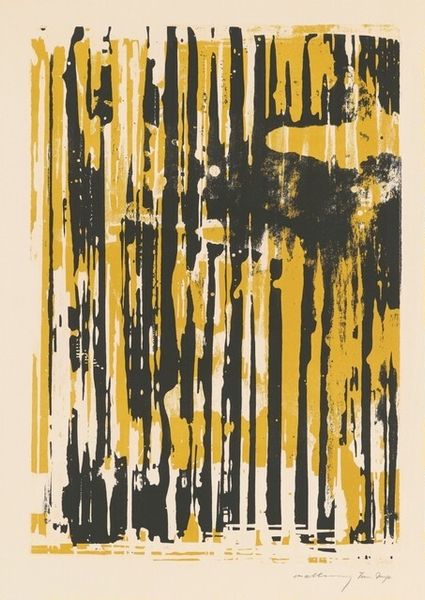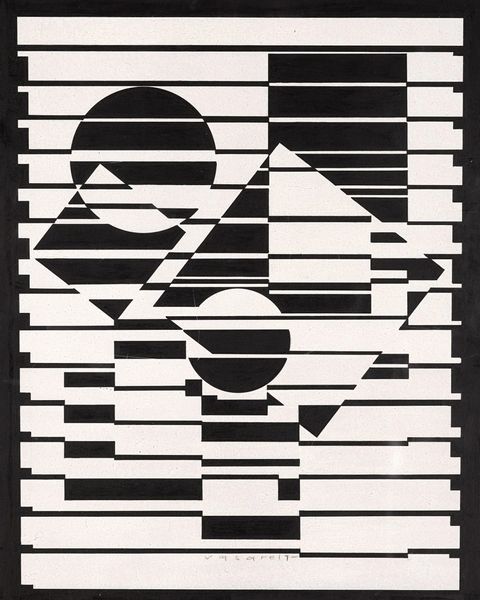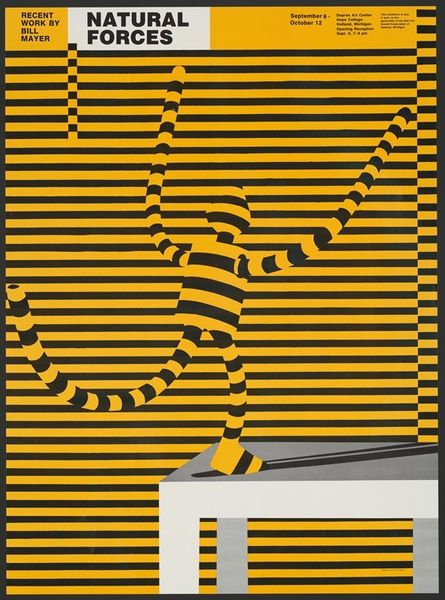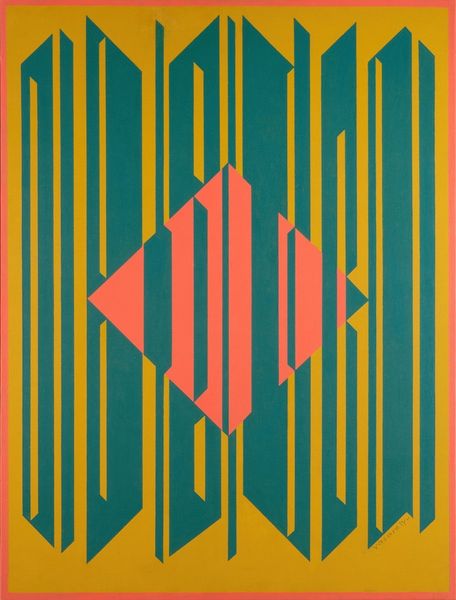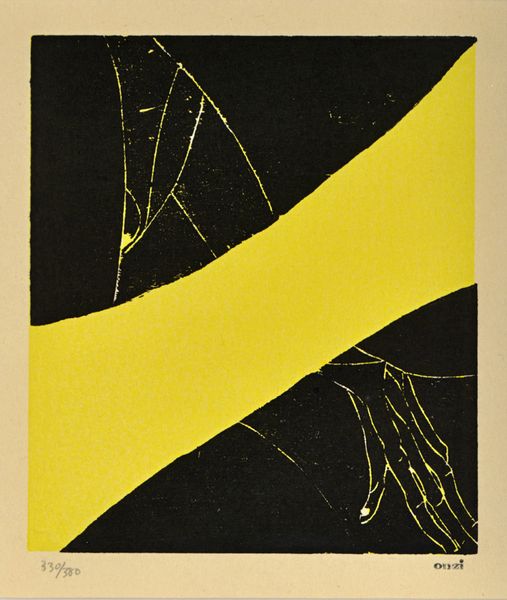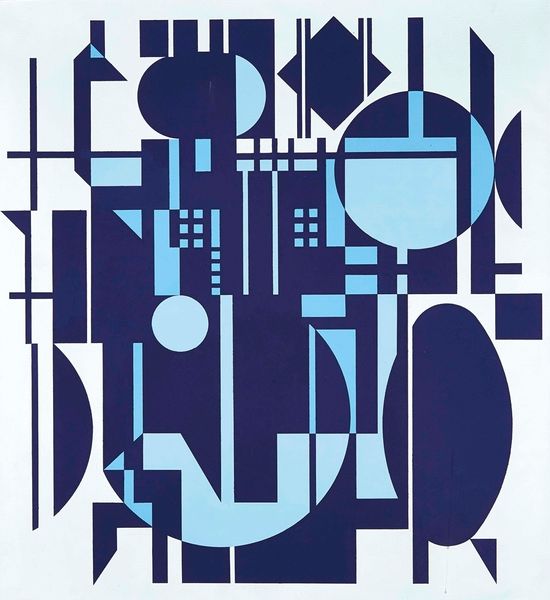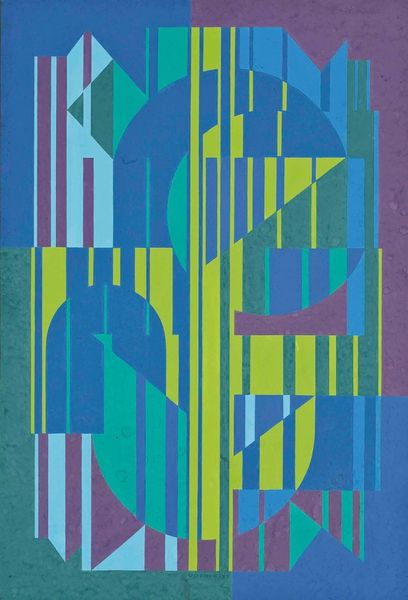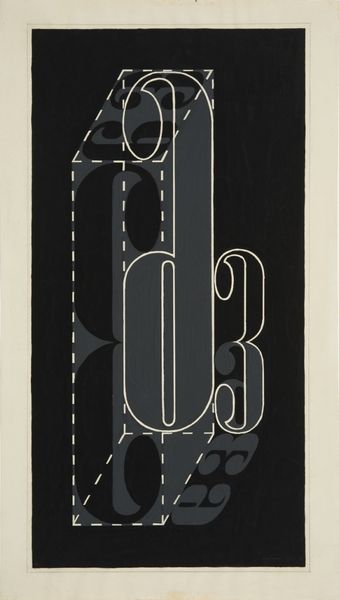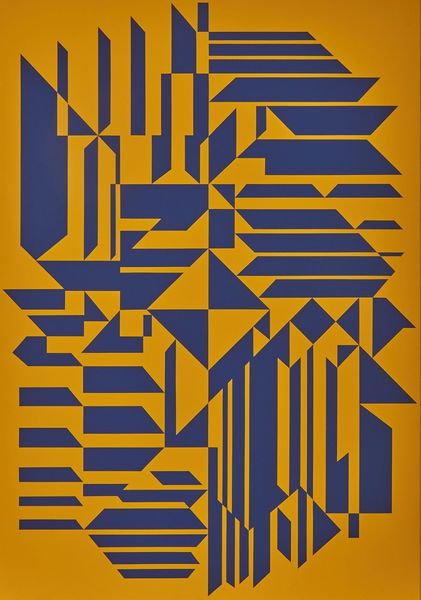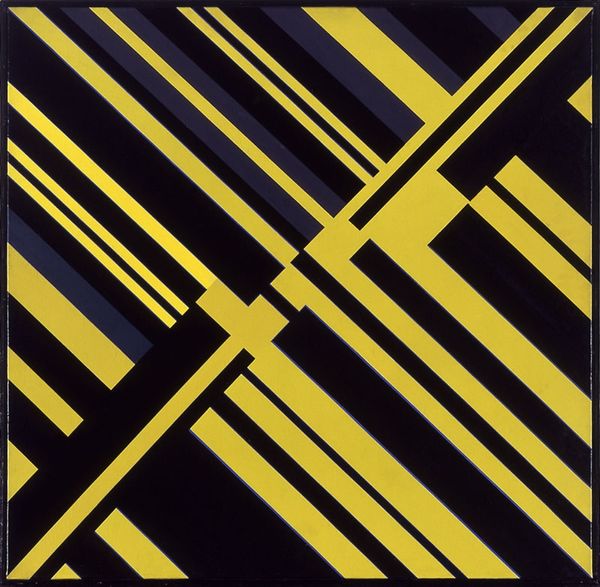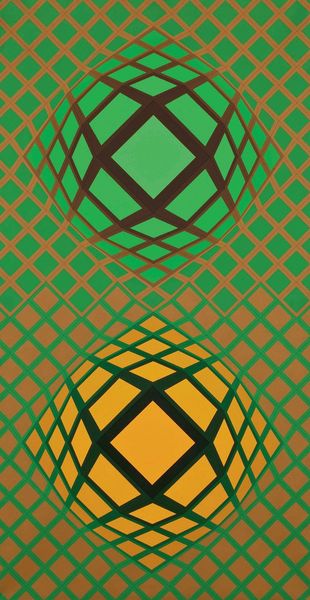
acrylic-paint
#
op-art
#
op art
#
acrylic-paint
#
geometric
#
geometric-abstraction
#
abstraction
#
line
#
modernism
#
hard-edge-painting
Copyright: Modern Artists: Artvee
Editor: We are looking at Victor Vasarely's "ALTAÏ II" from 1955, made using acrylic paint. The geometric lines create a captivating contrast. It feels so meticulously planned. What is your interpretation of this work? Curator: Consider how Vasarely engages with industrial processes and the serial production of art. The clean lines, the uniform application of acrylic – these speak to a desire to integrate art into the mass-produced environment. What do you make of the stark colour contrast? Editor: The colours, with that flat application, do give it a manufactured, almost screen-printed feel, but wouldn't that undermine the traditional craft of painting? Curator: Precisely! And that's the tension Vasarely plays with. By embracing industrial aesthetics and the flatness inherent in mass production, he challenges conventional notions of artistic skill and the "aura" of the unique artwork. Consider how this connects to post-war consumerism. Editor: So, the art isn't just *on* a canvas, but reflecting broader production trends. Were the materials themselves significant? Curator: Absolutely. Acrylic paint, relatively new at the time, offered a uniformity and durability aligned with industrial applications, distancing itself from the nuances of oil paint. The canvas, the support structure, all become sites where materiality and process speak to broader societal shifts in the means of production. Editor: That shifts my view significantly. The focus on geometric abstraction and stark colour goes beyond a mere aesthetic choice; it speaks to that cultural context. Curator: It reflects a deliberate effort to break down barriers between art and industrial design. It invites questions about how we assign value to objects within a culture obsessed with mass production. Editor: I see now how the medium and production speak so directly to its message. Thank you for highlighting that. Curator: My pleasure! Hopefully it underscores that materiality always embeds cultural meanings and values.
Comments
No comments
Be the first to comment and join the conversation on the ultimate creative platform.
